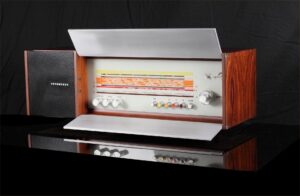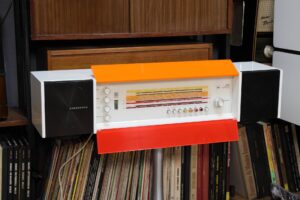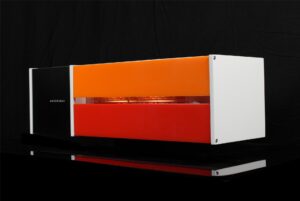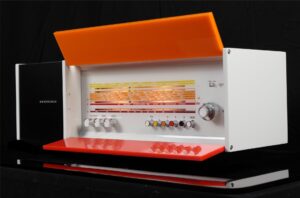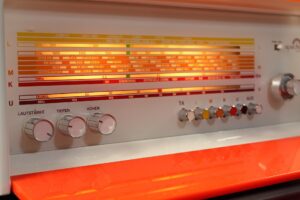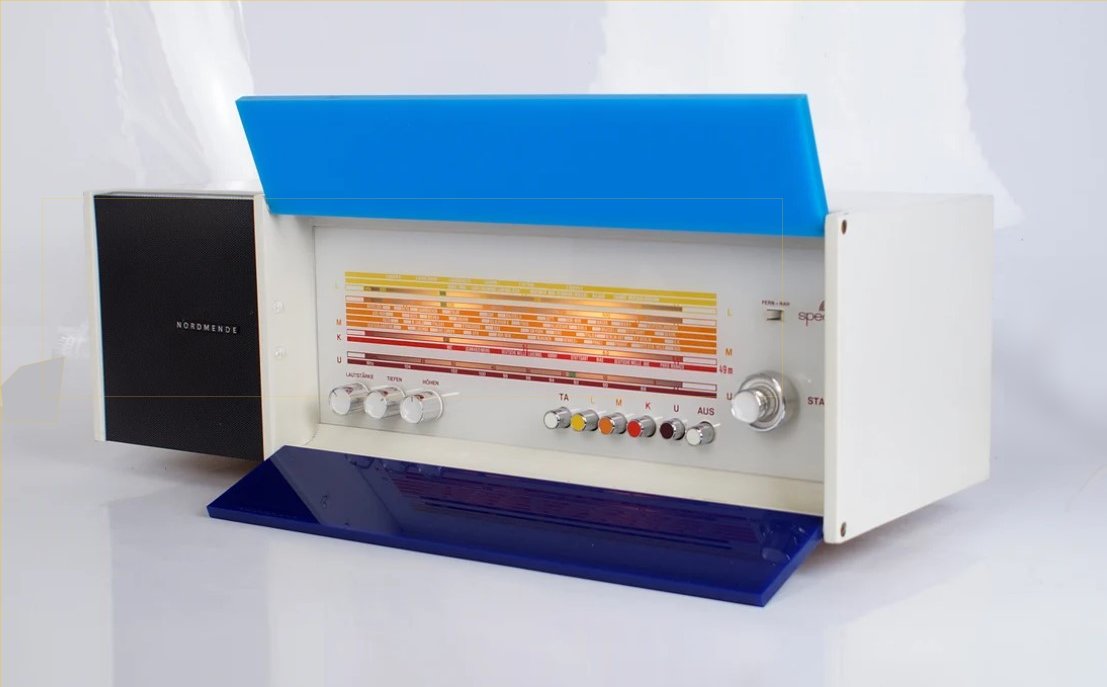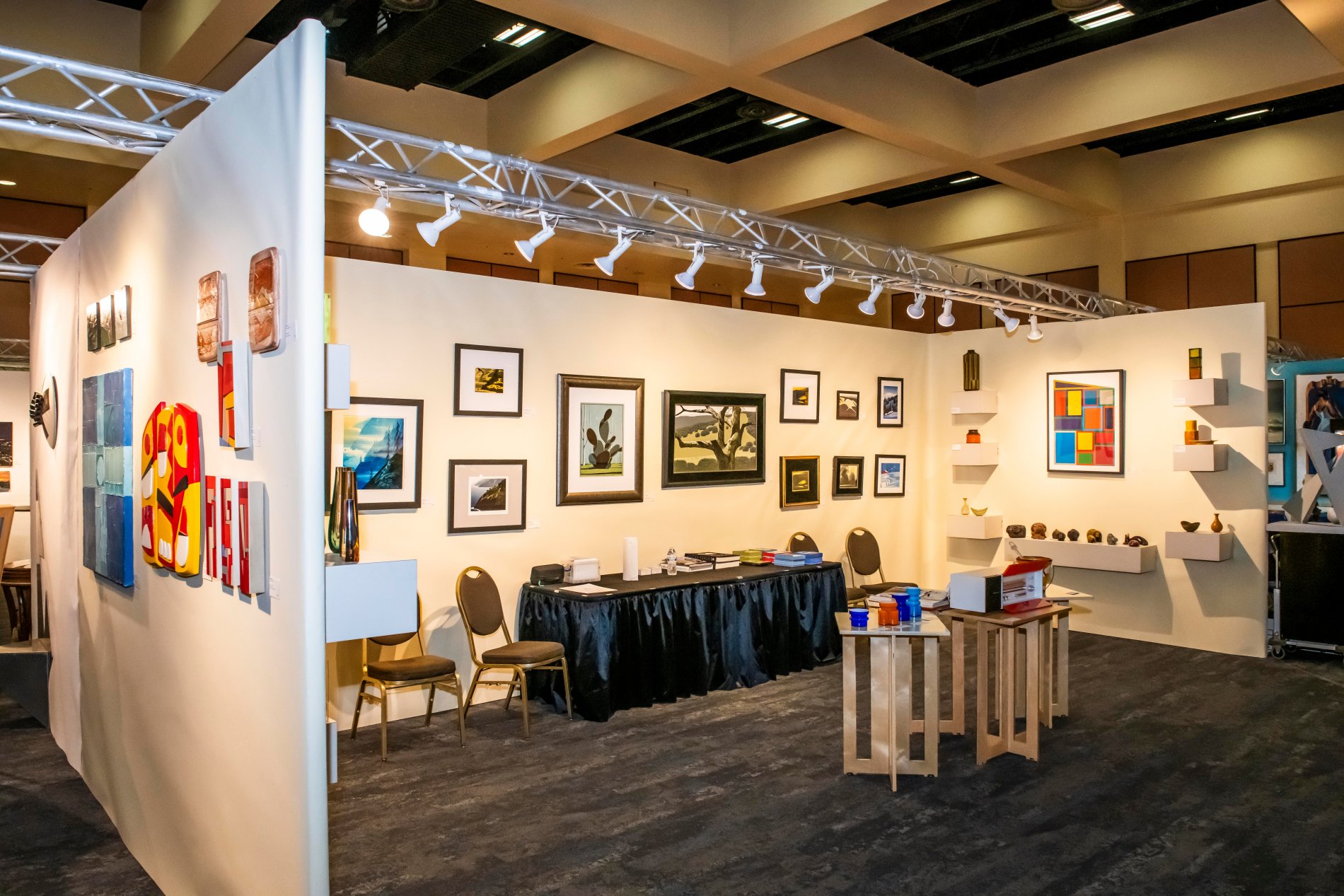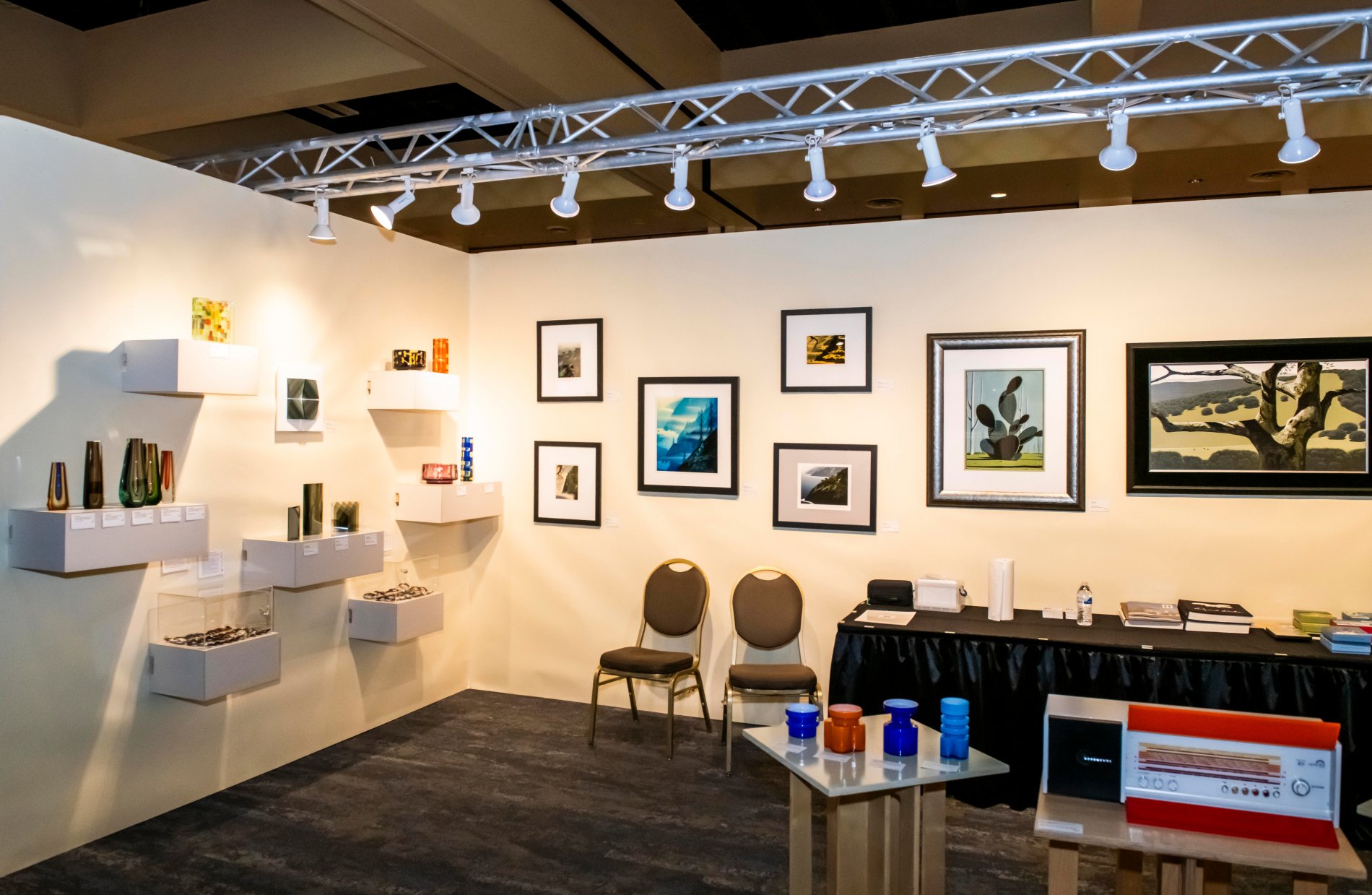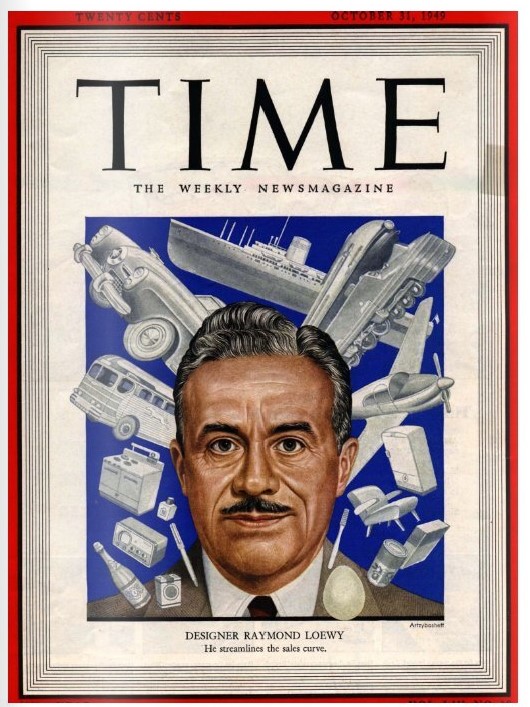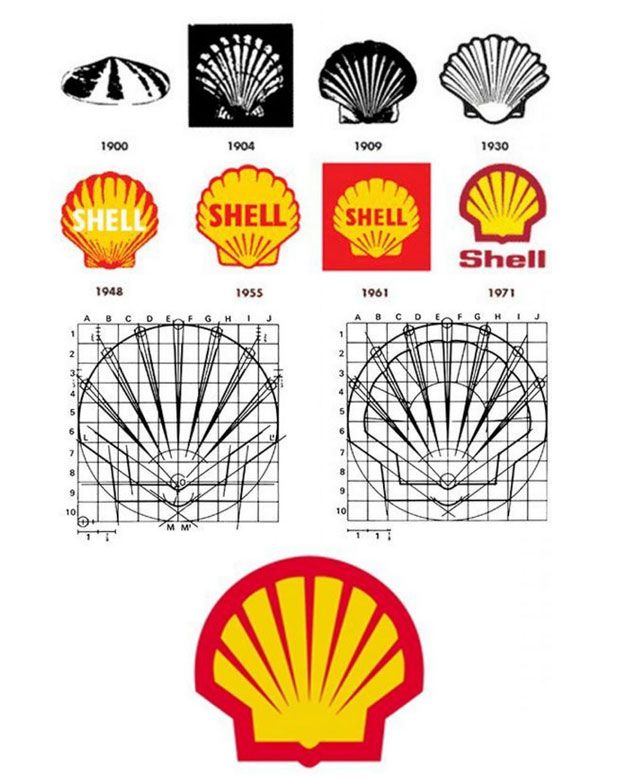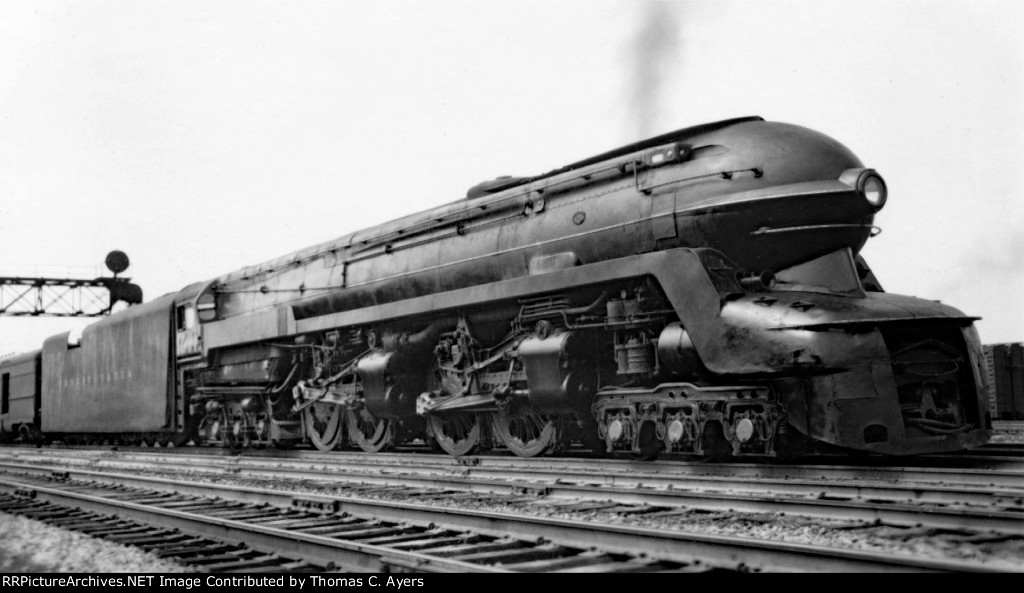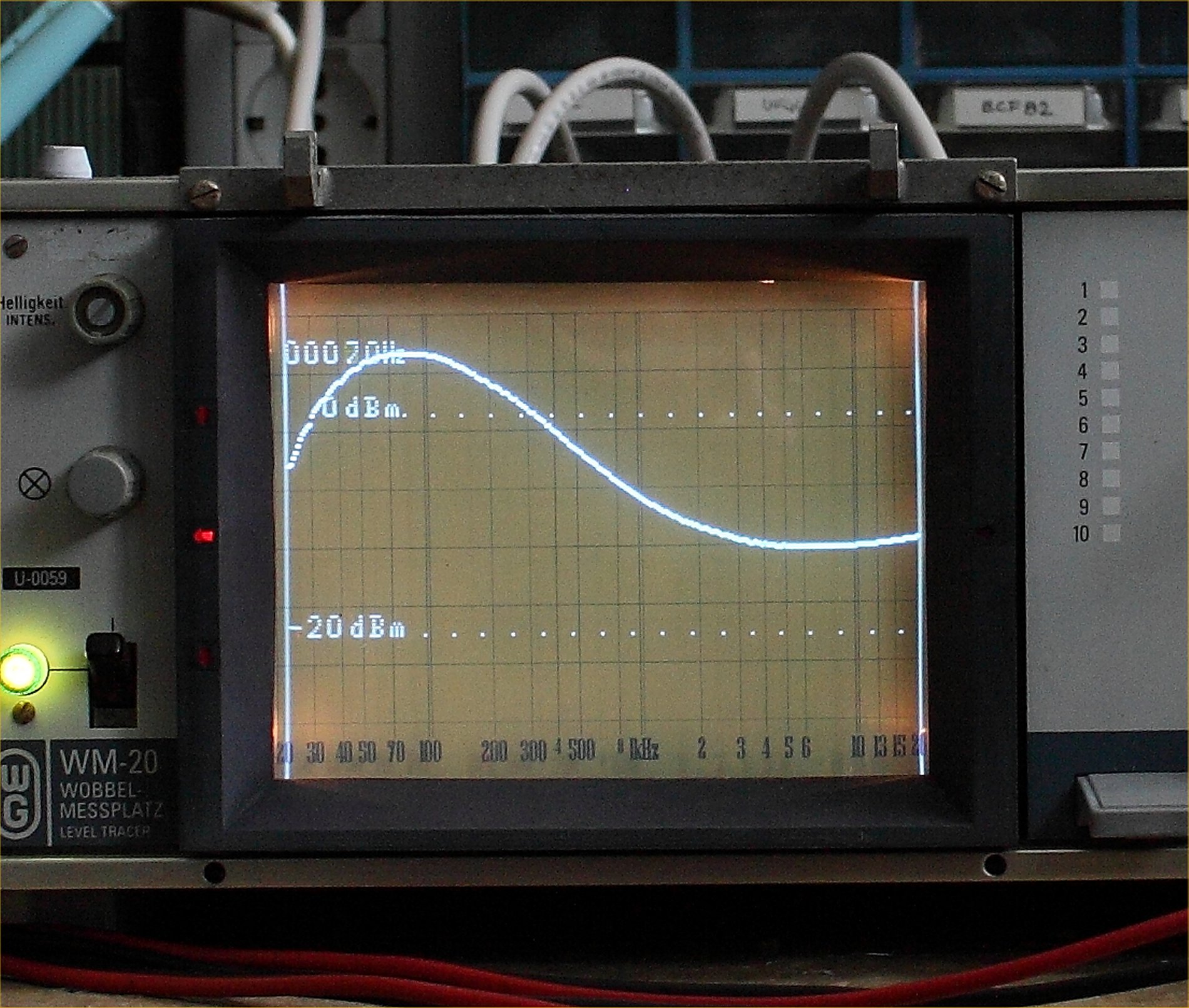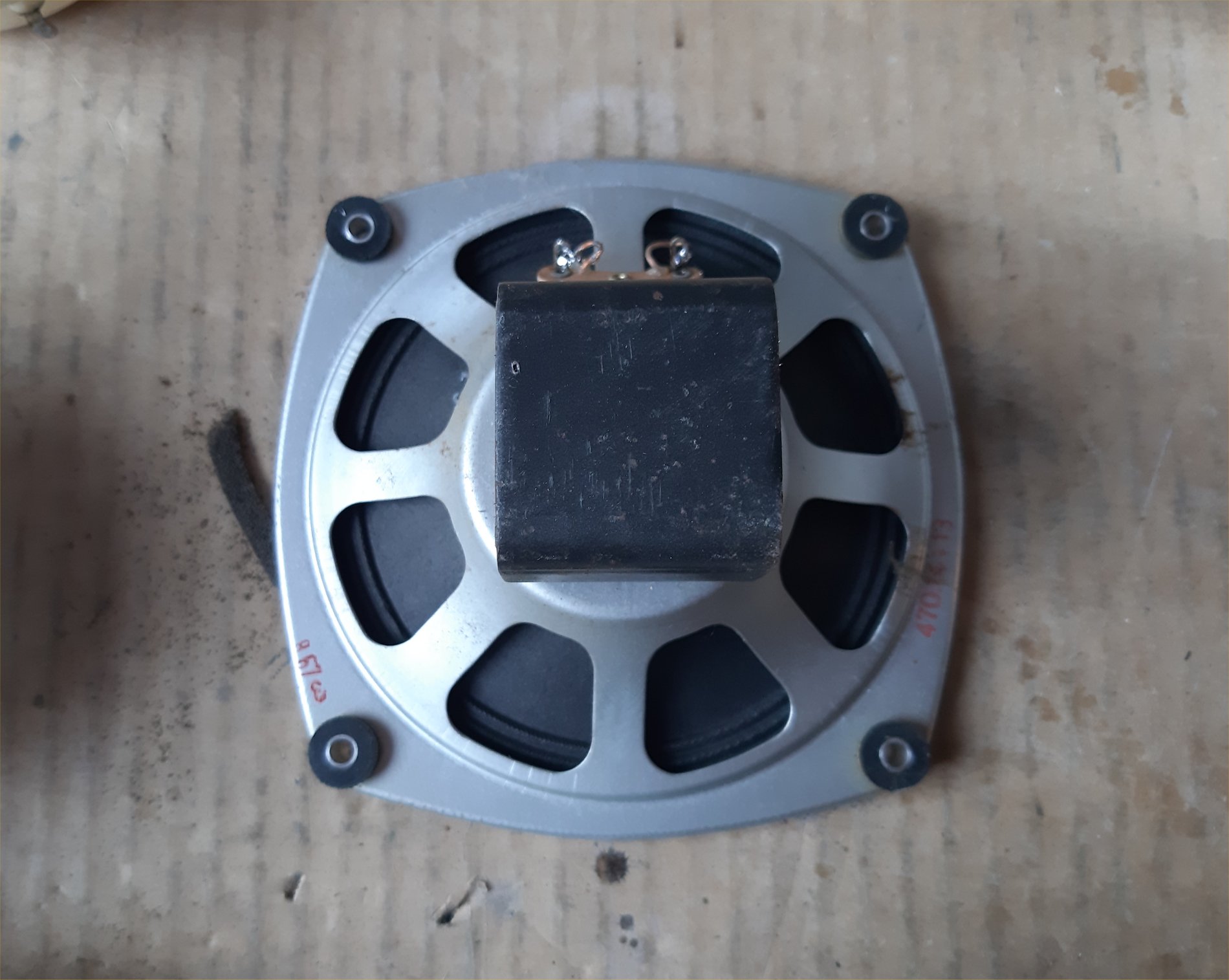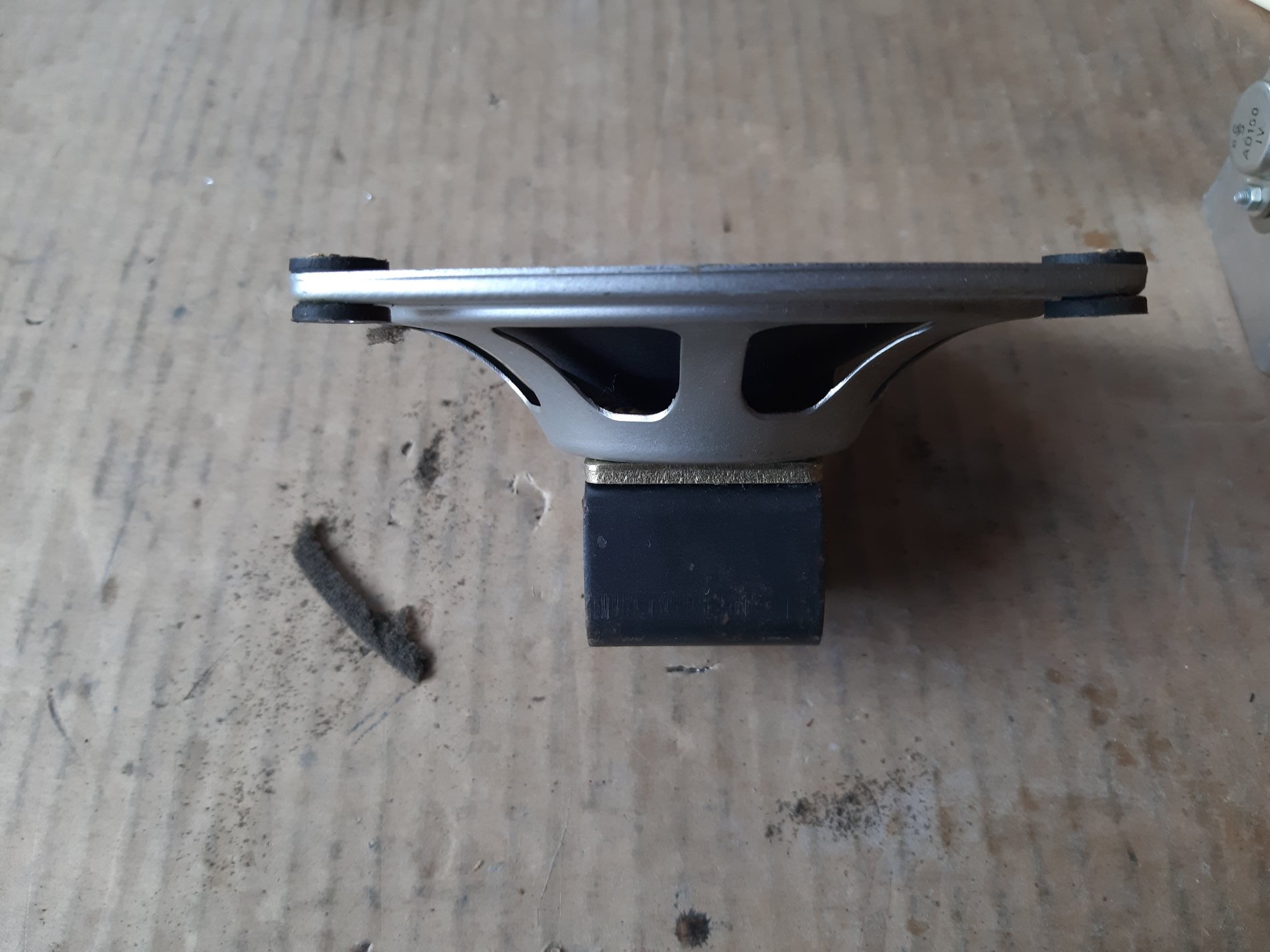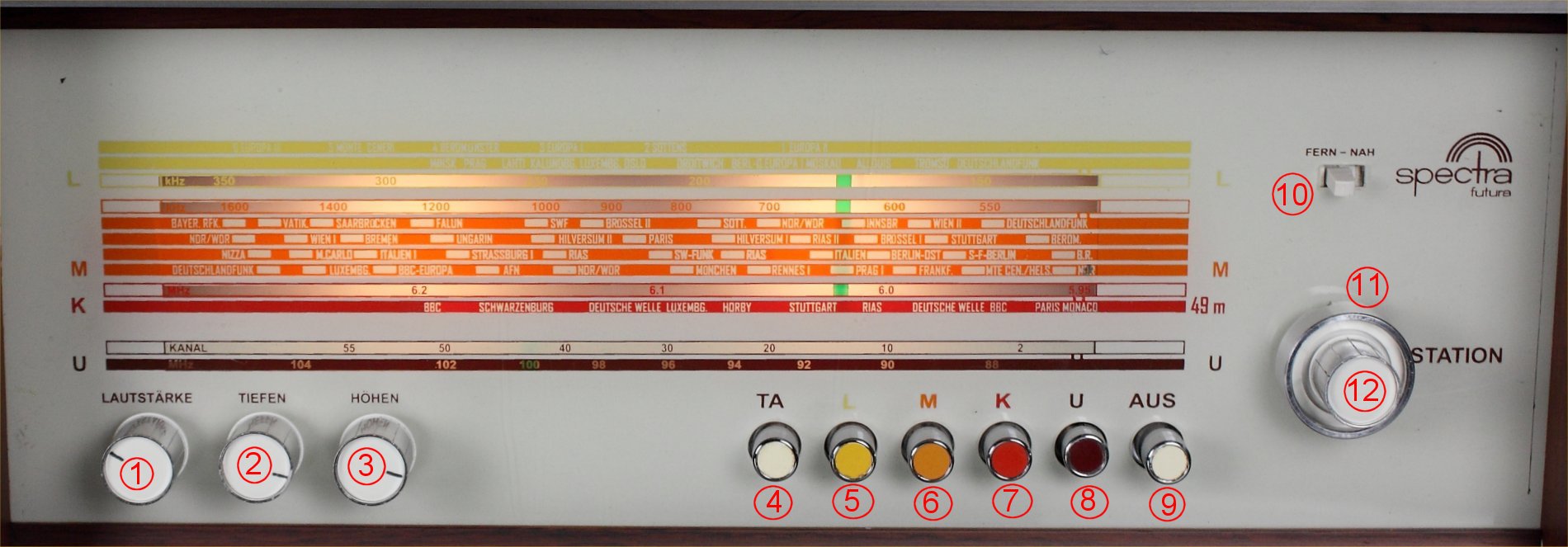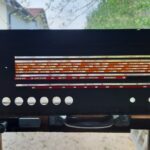 german radios - en
german radios - en
NORDMENDE Spectra Futura – en
- by giovanni
.
NORDMENDE SPECTRA FUTURA (Mono - Stereo)
NORDMENDE SPECTRA FUTURA (Mono - Stereo)
Also this reviews will be accompanied by a section with graphs of technical measures of the most important parameters.
There is no such thing anywhere else, as far as I know. Not even the manufacturers themselves detailed the technical features of their own devices at this level.
This new section has been developed for an objective comparison of different devices.
In order to avoid interpreting the measurements incorrectly, it is very important to read the warnings carefully the first time.
The Nordmende Spectra Futura is the only transistor device of the German brand that we will review on this site.
We will examine it for its design resulting from the collaboration between the Nordmende design center and the famous American designer Raymond Loewy.
Will talk about Loewy later on this page. However, we all know the products he designed, such as the Coca-Cola bottle or the Lucky Strike pack.
Collaborating with the American designer was a very good choice. The device was a sales success and overshadowed all similar radio receivers of other brands, which sometimes tried to awkwardly imitate its shapes.
It was produced in many versions, with many color combinations, as shown in the brochures of the time shown here.
The most flamboyant model is certainly the Orange-Red, while the most elegant is with solid aluminum bands and wooden cabinet.
Nordmende produced both monophonic and stereophonic versions of this device. Both models are visible in the photos on this page. Obviously the stereophonic version is the most satisfying from a musical point of view.
The electronic design of this model is interesting from our point of view. Being a few years that the transistors were used for commercial purposes, the circuits were very similar to the tube circuits. The voltages and polarizations changed, but the principle schemes were almost the same, so the sound of the amplifiers of this period is close to the sound of the tube ones.
The FM section is quite stable, very traditional and time-tested.
Conclusions: A beautiful device to look at, which adapts to modern as well as vintage furnishings, with a pleasant and sufficiently powerful sound. A piece of design made in the USA in a machine made in Germany in a handcrafted restoration made in Italy.
__________________________________________________________________________________________________________
The first song is by Megan Thee Stallion and Dua Lipa, it's called Sweetest Pie. Megan Jovon Ruth Pete, aka Megan Thee Stallion for her imposing build, is a Texan rapper and girl prodigy. In a few years he has received considerable public and critical success, famous on TikTok his Savage remixed with Beyoncé. In 2021, she was awarded Best Debut Artist. In 2022 he published in collaboration with the singer Dua Lipa, Sweetest Pie (Sweet cake). The song is permeated with very explicit sensuality, as is Megan's style. An irreverent debut in the presentation of the spectacular Nordmende Spectra Futura.
And irreverence and sensuality are the leitmotifs of the second piece, The quadrille of bullfighters from Bizet's Carmen.
The apparent lack of morality of the protagonist, her vitality, the immeasurable propensity for freedom make her incomprehensible, unacceptable to Don José, who falls madly in love with her and as in the worst traditions will end up killing her. The Spectra Futura, despite the small numbers, manages to highlight the chorus and the orchestra with a momentum typical of much more muscular machines.
The third song, played by Antonio Serrano (mouth organ) and Javier Colina (double bass,) is actually by Stevie Wonder, Overjoyed. The title, overflowing with joy, does not hide the meaning and impulse of the piece. The text of "Overjoyed" speaks of a love not reciprocated, indeed, hidden, lived all alone on one side. Stevie wants to reveal to his beloved how deep is the feeling he has for her, hoping that she will accept it and reciprocate. Musically, the piece is characterized by the continuous changes of key and the use of natural sounds as a rhythmic basis. Serrano's harmonica is well enhanced by the Spectra Futura which puts it a head ahead of the double bass, as it should be.
The fourth song is the famous Back to Black by Amy Winehouse. “Back to Black” means returning to a state of depression after the end of a love affair. She specifies that it is a state of despondency in which the pain of loneliness drowns in alcohol and drugs. The reference is to the tormented story with Blake Fielder-Civil, which led to her death after a physically and psychologically toxic marriage, where Amy, already debilitated by eating disorders, did not last long.
The fifth song, again by Stevie Wonder, dedicated to his wife, Syreeta Wright. You are the sunshine of my life. The couple was actually already divorced by the time the song hit. Their marriage has always been difficult due to the singer's work schedule. "I've always lived in his shadow," Wright said. However Wonder was very devoted to Syreeta. In the song the husband looks at his now familiar wife and remembers why he loves her and promises he always will. But it didn't work out for this couple.
Our NORDMENDE SPECTRA FUTURA at MODERNISM WEEK - PALM SPRING (CA) - FEBRUARY 2025
Palette Contemporary Art & Craft stand
RAYMOND LOEWY
Raymond Loewy appears twice on the cover of the prestigious TIME magazine, in 1949 and 1990 as one of the 100 most influential Americans of the 20th century
Born in Paris in 1893, he emigrated to the USA at the end of the First World War. He was one of the most prolific and creative designers in the world, and perhaps deserves the title of father of industrial design.
His work is not limited to a single sector but extends over the most diverse areas.
Much can be read about his work online and in the numerous books dedicated to him, but probably few know that in 1973 he worked on a diplomatic project between the United States and the USSR with the aim of easing tensions between the two countries during the Cold War period.
A very small part of his most famous works
1939 - The Pennsylvania Railroad S1 steam locomotive
1940 - The pack of Lucky Strike cigarettes
1954 - The Scenicruiser bus for Greyhound company
1955 - Coke - The first large format bottle, and in 1960 the first steel can.
1962 - Studebacker Avanti with bodywork made of fiberglass reinforced polyester, speed over 240 km/h.
1962 - Air Force One, designed following the color indications of President John Kennedy, who followed the tastes of First Lady Jaqueline.
1967 - The Nordmende Spectra Futura designer radio, which was successfully marketed the following year.
1971 - Shell logo, which has remained almost unchanged to this day.
-
BLUETOOTH
Bluetooth receiver embed
-
MULTI PLATFORM CONNECTION
Each radio is equipped with a cable for connection to any digital device.
ELABORAZIONI TUBESOUND
- Bluetooth receiver embed - The unit is equipped with a BLUETOOTH receiver powered directly by the receiver power supply. This makes it possible to control the amplifier from any external digital device as an IPAD, a Smartphone, or a sophisticated multimedia station. So you can hear your preferred web station or your lossesless file without cables on the room. Wireless Receiver can be equipped upon requests.
- Multi Platform Connection - A customized adaptation cable to connect any digital device as Iphone, Smartphone, Laptop, CD Player etc. will be provided with this radio. This special cable suits the different impedances between the modern equipment and the receiver. Furthermore the two stereo channels flow into one without increasing the load to the input unit.

.
HISTORY
1923 - Otto Hermann Mende founds Radio H. Mende GmbH in Dresden producing radios under the brand name “Mende”.
1939 - During World War II the government requests to produce bomb detonators.
1945 - The factory is partially destroyed by bombing and dismantled by the Soviet Union.
1947 - Martin Mende (son of the founder) sets up a new company in Bremen the North German Mende Broadcast GmbH. Whose name is later changed to NORDMENDE. The operational headquarters are established in the former Focke-Wulf aircraft factory in Hemelingen.
1950 - Becomes one of the most prestigious German radio manufacturers. Since 1950, development engineers have been planning the production of televisions.
1953 - The demand for televisions grows and Nordmende is already prepared.
1961 - Nordmende produces the first television with an ultrasonic remote control.
1964 - A new factory is opened in Wildeshausen, then in Bremerhaven, Sittensen and finally in Verden in 1972
1968 - The company is oriented to design products and comes out the "Spectra Futura" designed in collaboration with the famous designer Raymond Loewy.
1969 - The sons Karl and Hermann take over the management and soon have to deal with the onset of the crisis. Competitive pressure was mounting, the market was "saturated" and the high cost of such quality proved to be a competitive disadvantage when the price of color televisions began to fall.
1977 - Company shares were sold to the French group Thomson-Brandt. But even this did not bring the hoped-for help and so in 1980 the last shares of the Nordmende company were sold.
1980 - The production of audio devices is transferred to France, but the French group was not organized and some absurd choices were made such as the division of labor in production and assembly between the plants in Villingen (Saba) and Bremen, which still made more complex and expensive to produce.
1981 - The first factories in Germany are closed. The same fate will befall the other companies controlled by the French group, such as Dual, Saba and Telefunken.
1987 - Europart's plan, 25% owned by the Thompson group, also failed and in the 1990s the new company filed for bankruptcy. Saba, Nordmende and Telefunken merged and remained part of the Thompson group.
MAIN FEATURES
Year of production: 1968/70
Superheterodyne IF: 460/10700
7 Circuits AM - 11 Circuits FM
Wavebands: Medium Wave (OM), Long Wave (OL), Short Wave (OC), FM (UKW)
Speakers:
1 full-range 13 cm
Dimensions (LHP) : 594 x 156 x 162 mm / 23.4 x 6.1 x 6.4 inch
Net Weight: 8.2kg / 18lb 1oz
Transistor 13: 3 x AF106, 2 x AF121, AF125, AF137, BFY39IV, BFY39II, BC139, AD161, AD162, AC122, AD150, 3 x AA112

MEASURED TECHNICAL FEATURES
IMPORTANT REMARK
(to be read carefully at least the first time)
- The following measures have been carried out in order to compare, from an electrical point of view, the devices that will be reviewed on this site. It is not possible to make comparisons with measurements made by other laboratories on different devices. The instrumentation and measurement conditions are probably very different.
- The instrumentation used for the measurements is obsolete and unprofessional. We believe that more precise instrumentation is not necessary due to the tolerances of the human auditory system. Distinguishing a distortion of 1% from one of 1.1% or 1.001% only makes sense from the electrical point of view. Probably no one can hear the difference by ear. Only a child and very few lucky people can perceive the difference between a flat response curve up to 16 KHz and one up to 20 kHz.
- The perception of sound depends on many factors, namely the age of the listener, the listening environment, the musical genre that is being reproduced, the listener's expectations, his or her listening habits and knowledge and many other factors, besides of course the quality of the other devices. Therefore, there is no direct and unique relationship between the results of the measurements made and the pleasantness of listening to a specific device.
BANDWIDTH
Normally the measurement of the bandwidth is done on a resistive load. The deformation caused by the loudspeakers' inductive load and the effect of the mechanical resonance of the speakers themselves on the feedback circuit are not considered. The effects are by no means negligible, the measurements carried out on a purely resistive load are always very linear but they don't coincide with the real frequency response.
On the other hand, this response curve was measured on an inductive laod, that is, with its own loudspeakers.
The frequency response measurements were made with a sinusoidal generator and a Wandel & Goltermann WM – 20 level meter.
You can see the actual frequency response on the vobulator' screen.
As you can see the low tones are slightly enhanced due to the always active loudness correction.
TONE CONTROL
The measurement is always taken on an inductive load, i.e. with its own loudspeakers.
In the image on the left you can see the effect of the bass control in the maximum exaltation position.
In the image on the right you can see the effect of the treble tone control in the maximum exaltation position.
RMS POWER
We consider as Maximum Power the square of the lower of the RMS voltages measured at the three sample frequencies divided by the load resistence.
The measurement conditions are the following:
- sample frequencies, 100, 1000, 10,000 Hz
- 8 ohm resistive load
- distortion less than or equal to 1%.
The measuring instrument provides the RMS value directly.
The measured RMS power is 4.6 W
INTERMODULATION DISTORTION %
The Intermodulation Distortion % was measured with the SMPTE standard and measured at 1W RMS.
The two measurements were carried out by modulating the 50 Hz sine wave with a 1080 Hz sine wave and then with a 10400 Hz sine wave, with an amplitude in a ratio of 1/4 compared to the basic sinusoid.
The output voltage was kept around 2.83V on an 8 ohm carico.
The measured Intermodulation Distortion % (IM%) is 0.13%
LOUDSPEAKERS
The original speaker, or speakers in the stereo model, is a modest Isophon P13F.
Its most important features are:
Maximum power 5W
Resonance frequency 130Hz
Frequency response 80-14000Hz
Sensitivity N.C.
The loudspeaker seemed to us not being able to fully express the good characteristics of the amplifier, for this reason we decided to replace it with an excellent JBL GTO525e or similar.
The features of the last is completely different:
Maximum power 135W
Resonance frequency 80Hz
Frequency response 70 - 21000Hz
Sensitivity 92dB
With this new loudspeaker the frequency response and power handling have changed radically.
Compatibly with the small dimensions of the cabinet and the limited power, the sound is now much warmer and more convincing. The effect of exaggerated emphasis of the mid tones due to the difficulty of reproducing the low and very high tones of the old loudspeaker has completely disappeared.
In the end, a beautiful sound capable of filling even a medium-sized room.
1 - Volume control (with loudness built-in)
2 - The bass control knob
3 - The treble control knob
4 - TA - AUX
5 - L - Long Waves
6 - M Medium Waves
7 - K - Short Waves
8 - U - FM
9 - AUS - Turn off
15 - FM sensitivity switch
16 - FM tuning knob
17 - AM tuning knob
1 - The treble control knob
2 - The bass control knob
3 - Balance Control
4 - Volume control (with loudness built-in)
5 - Stereo broadcast indication
6 - Tuning indicator
1 -
2 -
3 -
7 - AFC - Automatic frequency Control
8 - STEREO - Mono/Stereo switch
9 - TA - AUX
10 - L - Long Waves
11 - M Medium Waves
12 - K - Short Waves
13 - U - FM
14 - AUS - OFF switch
15 - FM sensitivity switch
16 - FM tuning knob
17 - AM tuning knob
THE USUAL AMAZING LAST IMAGE






